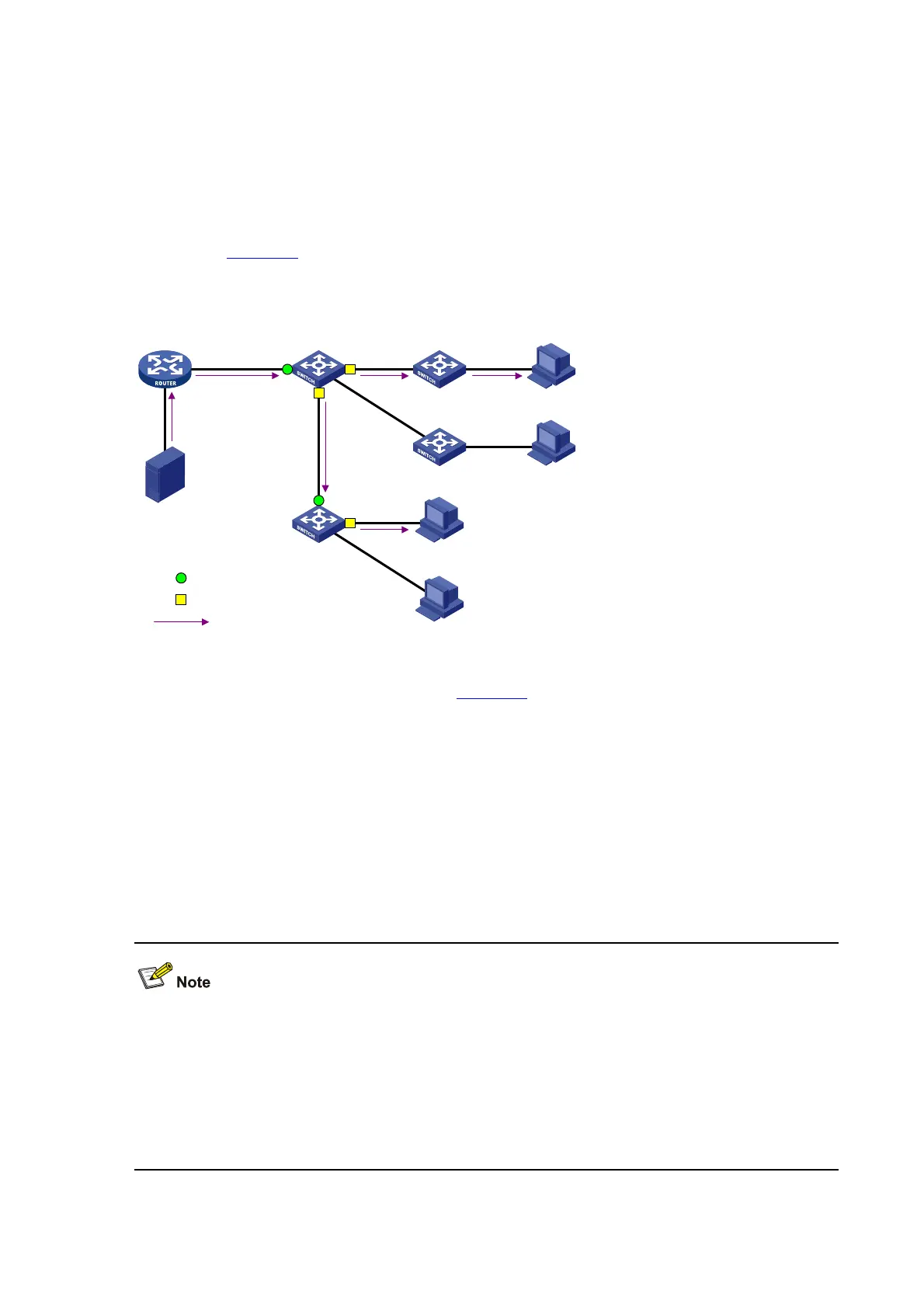2-2
z Reducing Layer 2 broadcast packets, thus saving network bandwidth.
z Enhancing the security of multicast traffic.
z Facilitating the implementation of per-host accounting.
Basic Concepts in IGMP Snooping
IGMP Snooping related ports
As shown in Figure 2-2, Router A connects to the multicast source, IGMP snooping runs on Switch A
and Switch B, and Host A and Host C are receiver hosts (namely, multicast group members).
Figure 2-2 IGMP snooping related ports
Router A Switch A
Switch B
GE1/0/1 GE1/0/2
GE1/0/3
GE1/0/1
GE1/0/2
Receiver
Receiver
Host A
Host B
Host C
Host D
Source
Multicast packets
Router port
Member port
Ports involved in IGMP snooping, as shown in Figure 2-2
, are described as follows:
z Router port: A router port is a port on an Ethernet switch that leads the switch towards a Layer 3
multicast device (DR or IGMP querier). In the figure, GigabitEthernet 1/0/1 of Switch A and
GigabitEthernet 1/0/1 of Switch B are router ports. The switch registers all its local router ports in its
router port list.
z Member port: A member port is a port on an Ethernet switch that leads the switch towards multicast
group members. In the figure, GigabitEthernet 1/0/2 and GigabitEthernet 1/0/3 of Switch A and
GigabitEthernet 1/0/2 of Switch B are member ports. The switch registers all the member ports on
the local device in its IGMP snooping forwarding table.
z Whenever mentioned in this document, a router port is a port on the switch that leads the switch to
a Layer 3 multicast device, rather than a port on a router.
z Unless otherwise specified, router/member ports mentioned in this document include static and
dynamic ports.
z An IGMP-snooping-enabled switch deems that all its ports on which IGMP general queries with the
source IP address other than 0.0.0.0 or PIM hello messages are received are dynamic router ports.

